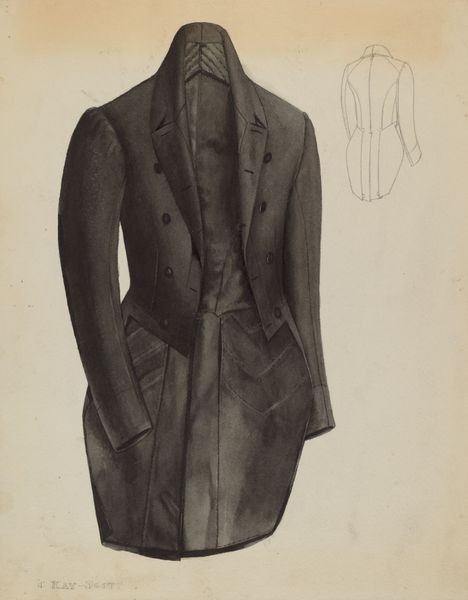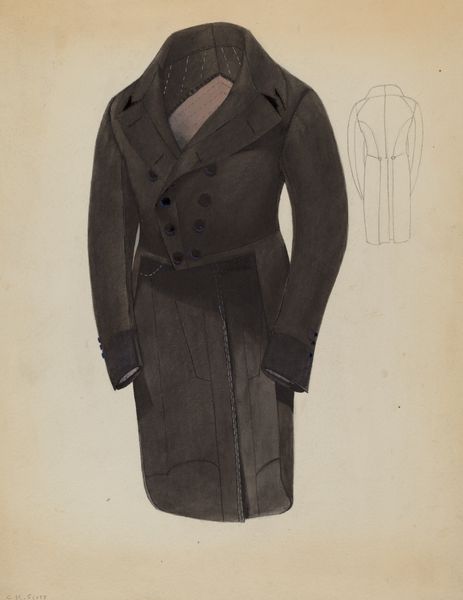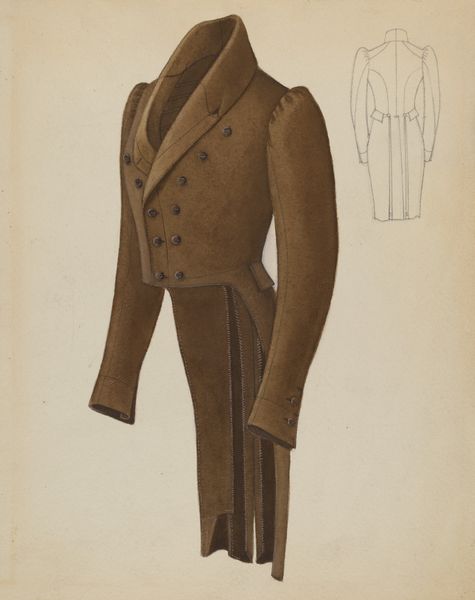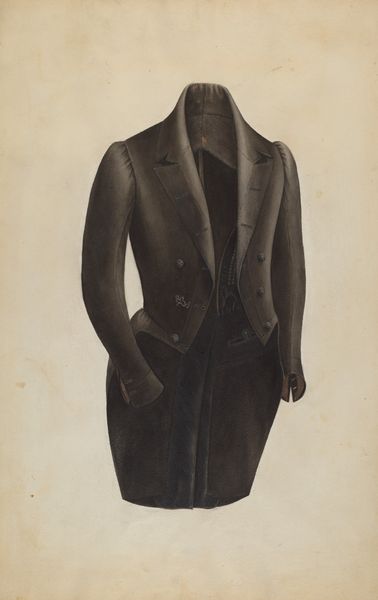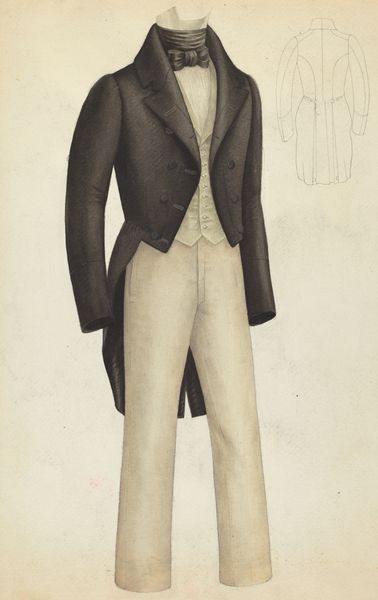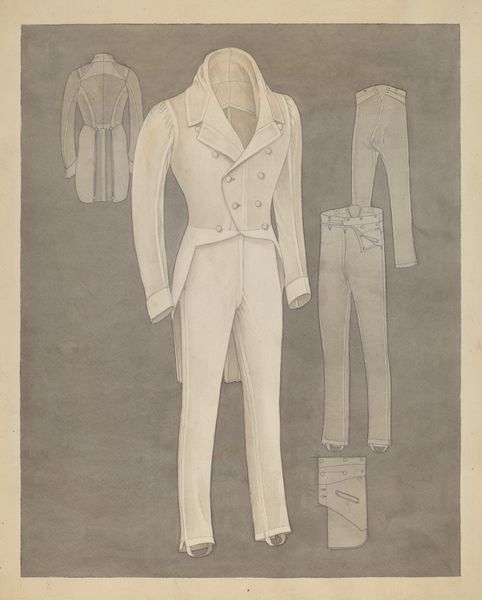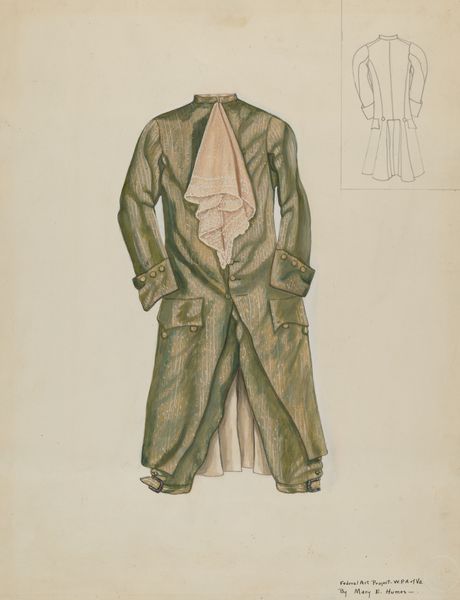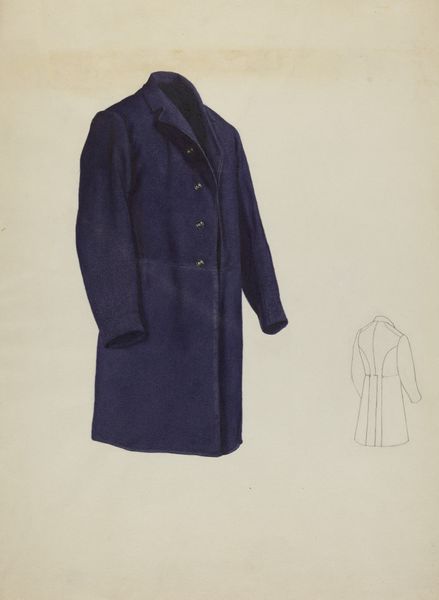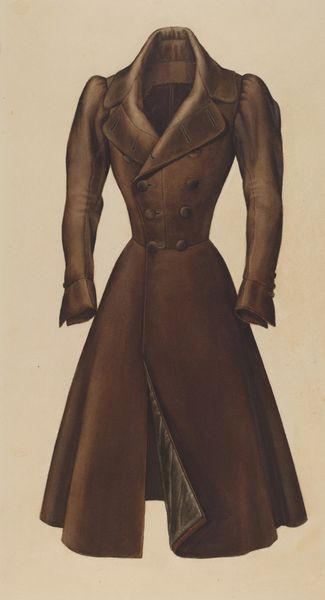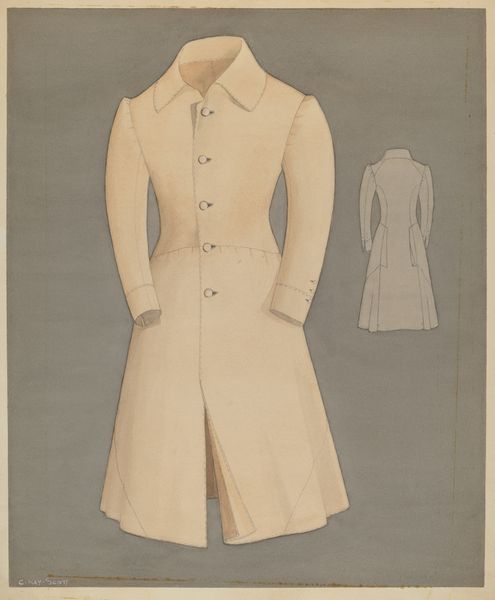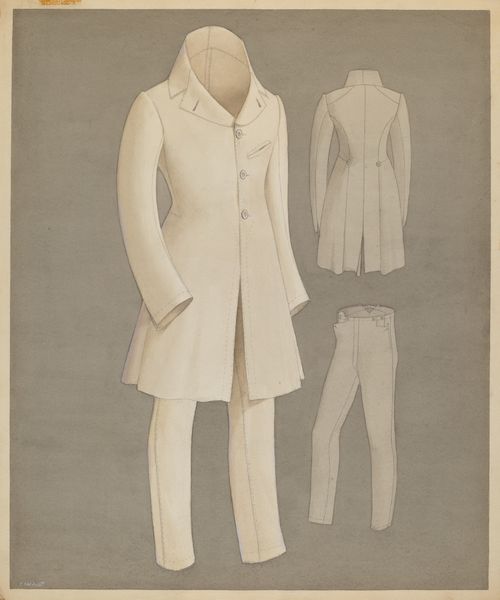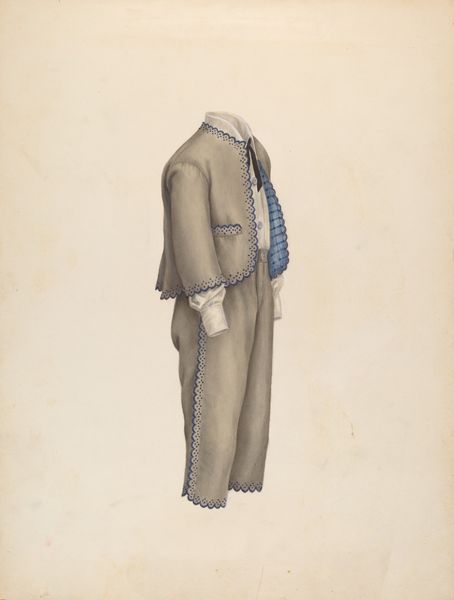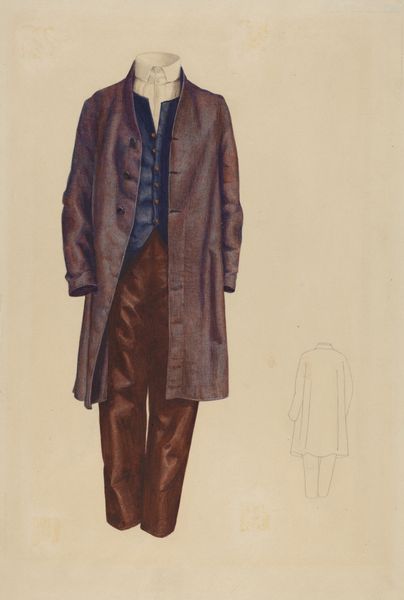
drawing, pencil
#
drawing
#
historical fashion
#
geometric
#
pencil
#
modernism
Dimensions: overall: 30.4 x 22.9 cm (11 15/16 x 9 in.) Original IAD Object: 30" long; bust: 39 1/2"; waist: 30 1/2"
Copyright: National Gallery of Art: CC0 1.0
Curator: Look at this, the Virginia Berge drawing, "Tail Coat," around 1937. I find myself particularly drawn to the geometry embedded in what appears to be a fairly straightforward fashion illustration. Editor: Wow, it looks so… formal, doesn't it? Somber almost. Like something a magician would wear if they were feeling particularly melancholic. Is it just pencil? It has a depth that suggests more. Curator: Yes, it appears to be mostly rendered in pencil, showcasing varying degrees of shading, which allows the drawing to project a striking realism. Consider the tailcoat itself—an emblem, certainly, of class and formality in that period. Editor: I do wonder about the purpose, I mean, it is just a sketch, right? Was she a designer, do we know? Or maybe sketching someone famous for inspiration? All the little social rituals around such attire... fascinating, isn’t it, how clothing embodies expectations. Curator: I think that idea is entirely valid, as historical fashions encapsulate social standards and ideologies. Notice, in Berge's composition, there is a small secondary sketch of the coat’s back which invites one to observe from multiple perspectives, thus creating a holistic representation that acknowledges its cultural relevance. Editor: It feels like a ghostly reminder of an era gone by. Like looking at an artifact, a little echo of parties and elegance from nearly a century ago. Does that tiny sketch in the back signify how something fades, its initial flamboyance fading in memory like pencil strokes on parchment? Curator: In a symbolic reading, absolutely. It speaks to fashion not just as form but as a kind of visual record. It is the ability to recall the style codes from a specific moment, which helps us see shifts in class structure. Editor: Right. Fashion is a cultural fossil, always reminding us of who we were... or perhaps, who we pretended to be. Still, there's something elegant and restrained in the depiction. I can’t help but find it deeply evocative. Curator: That's exactly it! Berge is speaking volumes with relatively few pencil strokes. It's economical, almost pragmatic, yet undeniably rich in its implied narratives. Editor: Berge offers more than an article of clothing on the paper, in essence she hands us a time capsule containing subtle hints regarding history. Thanks to the art's compelling story, it definitely has made me contemplate attire and culture today.
Comments
No comments
Be the first to comment and join the conversation on the ultimate creative platform.
